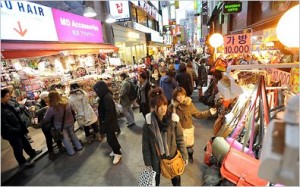UNITED NATIONS — Recently UN member states turned their attention to the need for Financing for Development, or put more plainly, stressing the still pressing need for development assistance to assist the plethora of poor nations. Fortunately foreign assistance donor states have not significantly cut their budgets, but rather sharpened their focus to many economic assistance programs.
Sadly during a global recession, there’s far more governmental belt-tightening and thus foreign aid budgets are prone to be cut or trimmed.
According to the UN, “In 2010, official development assistance (ODA) from the OECD countries reached a record level of $127 billion, representing 0.32 percent of their combined national income.” Only a handful of states such as Denmark, the Netherlands and Sweden among them reached the sought-after aid target of 0.7 percent.

Interestingly an American delegate stated, “Official development assistance from governments and multilateral organizations is no longer the primary driver of economic growth. In the 1960’s, official development assistance (ODA) accounted for 70 percent of capital flows to developing countries.” Yet today, “because of private sector growth and increased trade…ODA only accounts for 13 percent of financial flows to developing countries.”
Significantly many countries who were dependent on foreign aid such as South Korea in the 1950’s, have developed into model students and not only have become prosperous members of the international community, but in fact now aid donors themselves.
South Korean’s Ambassador Kim Sook told delegates, that while current ODA contributions “hit a record this year,” the continued “outlook for sustained increase in ODA beyond 2010 is not promising. This is especially so, considering the ongoing adverse impact caused by global economic and financial difficulties.”
Seoul’s delegate stressed that South Korea “is firmly committed to fulfilling our pledge of to triple ODA volume by 2015 compared to that of 2008.” Amb. Kim added “We recorded the 2nd largest increase rate of ODA volume,” among donors last year. In 2010 Seoul’s ODA stood at $1.2 billion; for 2011 the sum jumped to $1.4. billion.
In many circles the oft-maligned term “foreign aid” has morphed into “foreign assistance” and “official development assistance” and in turn “financing for development.” It’s bit like politicians calling taxes as revenue enhancement. Still while the need for foreign assistance persists, so does the realization that financial assistance should not remain an open-ended financial faucet promoting dependency.
Countries such as Canada have a long-running and well-honed ODA programs. Canada’s deputy-delegate Ambassador Gilles Rivard stated, “Canada has met its commitment to double its overall international assistance to $5 billion in 2010-11 from 2001-02 levels.”
Germany too has remained a major global donor; in 2010 the Berlin government reached its highest ODA contribution ever, with almost $13 billion spent.
Countries like Australia have well-focused programs too. “As a leader in the mining industry, Australia will share its expertise and experience to assist resource-rich development countries to maximize the benefits of mining,” stated Kelvin Thomson, a member of parliament. He added, “This will be supported by our new $127 million Mining for Development initiative for developing countries.” The program works with forty different African states.
While official ODA programs remain crucial, there’s much more room for the private sector. The UN states, “net private capital flows to development countries are estimated to have risen from $325 billion in 2009 to $392 billion in 2010.” About a third of foreign direct invest goes to developing countries.
Naturally investment and foreign trade remains crucial. “Malaysia as a trading nation firmly believes that international trade can play a vital role in promoting growth and development,” Malaysia’s delegate advised. Malaysia views that Aid for Trade measures be expanded to many of the least developed countries.
Foreign aid remains crucial to many countries following conflicts or natural disasters. But in a sense, ODA can be akin to training wheels on a bicycle; very useful to someone learning to ride but something you soon grow out of the need for. As I often say in lectures, “a child learns to ride a bicycle with training wheels. Keeping the wheels on five years later, probably won’t hurt, but certainly will inhibit skills, confidence and cause dependency.”
An initial use of “training wheels” assistance can be normal for post-war economies like South Korea, Taiwan, Malaysia, but those places have all performed immeasurably better since being free from the constraints posed by them. Think how countries like South Korea, Taiwan and Malaysia have excelled since the proverbial training wheels of foreign aid were taken off in the 1960’s? Entrepreneurialism works better alongside free access to markets, but initial assistance is often needed to prime the pump of the creative wellspring.
John J. Metzler is a U.N. correspondent covering diplomatic and defense issues. He writes weekly for WorldTribune.com.


You must be logged in to post a comment Login